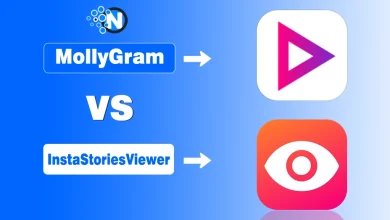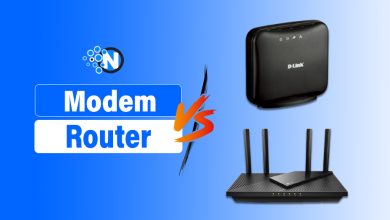How Mind Mapping Improves Collaboration for Remote Teams

With more and more people working from home, brainstorming and team collaboration have become harder. Sure, we have tools that allow us to communicate with our far-away colleagues but how do we make the process more efficient? Well, this is where mind mapping comes into play. In this article, we’ll be taking a look at three different things:
- How the working environment has changed;
- What exactly is a mindmap and how to build one;
- How mind maps improve remote team collaboration.
So let’s not waste any more time and get straight to the point!
I. Changes in the work environment
It was March 2020 when companies all over the world closed the doors to their offices and instructed their employees to work from home. Naturally, people thought that this would be temporary – just a couple of months until things get sorted out. But here we are, almost two years later, still working from home.

The pandemic has changed the face of the world as we know it and that includes the working environment. Such a change would have normally happened over the span of a few years, if not decades. But because the context didn’t allow for that, everyone had to adapt in just a couple of months.
Both the employees and employers had to make drastic changes. If working from the kitchen table would’ve seemed weird two years ago, now it’s become the norm. Parents with kids now have to juggle work tasks and their kids’ demands. Companies had to adapt to their employees’ new working style, allowing them to work from anywhere and offering them the tools they need to do their job.
There were many lessons to be learned from this. People now know that meetings aren’t often necessary, they figured out that the standard 8-hour schedule might not be for everyone or that being at the office doesn’t necessarily mean they’re more productive. While adapting to remote work, both people and companies had to find the best communication tools.
Skype, Zoom or Slack are now being used daily for teams to stay up to date with projects and speak to each other. But what happens when a team needs to brainstorm and collaborate remotely? In short – they use mind maps. If you’re not familiar with the term, keep on reading!
II. What is a mindmap and how to build one
In essence, a mind map is a diagram. It’s a visual tool that allows for better learning and information retention. Think of the mind map as an illustration of sorts, centered around a middle concept. Around this central idea, you’ll have smaller branches of keywords and ideas that relate to it. And around those, you’ll have even smaller branches that relate to them. And around those… You get the point!

Because the human brain isn’t really made to organize all the information on a strict hierarchical level, it needs something better. And because a mind map is based on various connections stemming from one (or more) points, it’s the perfect creativity and collaboration tool.
So how do you build a mindmap?
Nothing easier! All you have to do is follow this five-step guide:
- Choose the main idea and place it in the middle;
- Have at least 3 more main topics that you’ll surround the first one with;
- Connect each secondary topic to the main idea;
- Come up with related details such as keywords, doodles, ideas or tasks for each of the main ideas;
- Connect each supporting idea to its corresponding topic.
And that’s it! You’re now ready to build your first mindmap. It’s time we take it to your remote team to improve collaboration and boost creativity.
III. How mind maps improve remote team collaboration
Mind maps are excellent tools for collaboration, especially when everyone is working from different places. So let’s see how mind mapping can turn any remote brainstorming session into a resounding success!
1. Mind maps are more engaging
Calls can be boring. Especially if they tend to go over the two-hour mark. In fact, people tend to lose interest and stop paying attention when the meeting has been going on for an hour. It’s not laziness, it’s just human nature. During calls, it’s also much easier to deter from the main subject and start talking about unrelated things.
Mind maps, on the other hand, are more engaging for everyone. Because it involves a short burst of concepts and related ideas, it allows everyone to stay engaged for the entire time. On top of that, every team member will be able to add new thoughts and ideas to it, without thinking twice about being judged. Because remember – when it comes to mind maps, no idea is a bad idea.
2. Mind maps make project management easier

Instead of writing endless emails delegating tasks, you could simply put together a mind map that you can then analyze with your team. People are impatient, especially when working from home (as they might be dealing with other “tasks” such as kids or pets) so you need to have their attention from the get-go.
Good mind mapping software will allow you to set up tasks and delegate them to the appropriate team members in a timely and efficient manner. You can also establish delivery dates, timelines and general priorities in a manner that’s clear and easy to understand.
3. Mind maps makes for better presentations

Powerpoint presentations are boring in person, let alone when they’re done remotely. A mind map can serve as a solid outline for any presentation. It will help you better summarize and overview information and can even be shared with your team so they can add their thoughts and opinions.
When you make a mind map presentation, make sure your team can interact with it. Everyone should be able to add their own input because after all, that’s how great ideas usually come to light.
Our Conclusion
Mind mapping is an extremely useful tool for remote team collaboration. It will allow your team to gather together and come up with great ideas no matter where they’re working from. On top of that, it’s fun to build and makes information easier to remember. If you decide to give mind mapping a try, let us know your opinion in the comments below!




